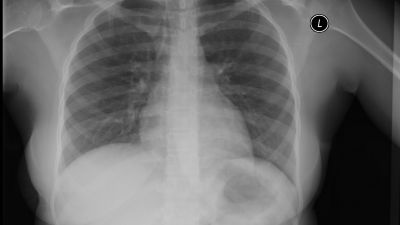
Jpatokal / CC BY-SA (https://creativecommons.org/licenses/by-sa/3.0)
With only 4 percent of the world’s population, the US has almost one-third of all reported COVID-19 cases and more than 25 percent of resulting deaths. In just two months, more than 60,000 Americans have lost their lives to the virus, surpassing the total number of military fatalities during the nearly two decades-long Vietnam War.
Those are unambiguous metrics of failure. Whenever pressed on why he didn’t do more to protect the country sooner, Trump reverts to a false talking point — that he was “the first one” to “close off China,” thereby saving “hundreds of thousands” of lives. Trump tells similar lies about later restrictions on travelers from Europe.
The pandemic is not Trump’s fault. Responsibility for America’s failure to respond quickly to the crisis falls squarely on his shoulders. Here are the facts.
January: Trump Ignores Warnings
Jan. 3, 2020: The director of the Centers for Disease Control and Prevention warns Health and Human Services Secretary Alex Azar about a novel coronavirus outbreak in Wuhan. Azar tells his chief of staff to notify Trump’s National Security Council that it’s a very big deal.
Early January: In the first of more than a dozen classified briefings through February, the President’s Daily Brief of Intelligence Matters warns Trump about the dire health and economic dangers that the virus poses.
Jan. 9: Trump holds a campaign rally in Toledo, Ohio
Jan. 14: Trump holds a campaign rally in Milwaukee, Wisconsin.
Jan. 18: Trump plays golf at his club in West Palm Beach. Azar has spent weeks trying to warn Trump personally about the virus and finally gets a call through to him there. Trump interrupts the conversation to criticize Azar’s handling of an aborted federal ban on vaping products.
Jan. 21: The CDC confirms America’s first case of COVID-19 in Washington State. On Jan. 24, it confirms a second case in Illinois.
Jan. 22: “We have it totally under control,” Trump says of the virus. “It’s one person coming in from China, and we have it under control. It’s going to be just fine.”
Jan. 24: The Marshall Islands becomes the first country to issue restrictions on travelers from China, requiring them spend at least 14 days in a country not affected by the virus before entering.
Jan. 27: Hong Kong bans Hubei residents, as well those who have visited that province (which includes Wuhan) within the past 14 days.
Jan. 28: Trump holds a campaign rally in Wildwood, New Jersey.
Jan. 29: Papau New Guinea bans travelers from Wuhan, as well as anyone who has been to China in the past 14 days who doesn’t undergo a medical check. Singapore bans foreign nationals who have traveled to China within the past 14 days and suspends visas for passport holders from China.
Jan. 30: Trump holds a campaign rally in Des Moines, Iowa.
The WHO declares COVID-19 a global health emergency, noting that there are now 98 cases in 18 countries outside of China, including cases of human-to-human transmission in Germany, Japan, Vietnam and the US. It urges all countries to “review preparedness plans, identify gaps and evaluate the resources needed to identify, isolate and care for cases, and prevent transmission.”
Other nations implement China travel restrictions, including: Afghanistan, the Bahamas, Maldives, North Korea, Rwanda, Tajikistan, and Trinidad and Tobago.
Jan. 31: Trump announces China travel restrictions, which he calls a “ban.” But 11 exceptions allow travel to continue between the US from China. Also, since Jan. 1, almost 400,000 passengers have already arrived in the US on unrestricted direct flights from China.
Trump later claims repeatedly and falsely that he “was the first” to ban travelers from China. But by the time his restrictions become effective on Feb. 2, more than 20 other countries have implemented limitations that are at least as stringent as Trump’s, including the following nations on Jan. 31: Antigua and Barbuda, Brunei, Cook Islands, El Salvador, Guatemala, Guyana, Iran, Italy, Jamaica, Kiribati, Micronesia, Morocco, Philippines, Solomon Islands.
February: Too Little, Too Late
Feb. 1: As Trump plays golf at his club in West Palm Beach, more countries implement China travel restrictions effective Feb. 1: Armenia, Australia, Egypt, Kyrgyzstan, Palau, St. Kitts and Nevis, Turkmenistan, Uzbekistan, Vietnam.
Feb. 2: Trump’s China travel restrictions become effective at 5:00 pm EST. Trump declares falsely, “Well, we pretty much shut it [COVID-19] down coming in from China.”
Feb. 2 to Apr. 4: Nearly 40,000 additional passengers arrive in the US on direct flights from China.
Feb 10: Trump holds a campaign rally in Manchester, New Hampshire, where he says, “Looks like by April, you know, in theory, when it gets a little warmer, [the coronavirus] miraculously goes away.”
Feb. 15: Trump plays golf at his club in West Palm Beach.
Feb. 19: Trump holds campaign rally in Phoenix, Arizona.
Feb. 20: Trump holds a campaign rally in Colorado Springs, Colorado.
Feb. 21: Trump holds a campaign rally in Las Vegas, Nevada.
Feb. 25: Nancy Messonnier, a senior CDC official, tells reporters that COVID-19 is likely to spread within US communities and that disruptions to daily life could be “severe.” Returning from a trip to India, Trump calls Azar to complain that Messonnier is scaring the stock markets and threatens to oust her.
Feb. 27: “It’s going to disappear,” Trump says. “One day it’s like a miracle, it will disappear.”
Feb. 28: Trump holds a campaign rally in Charleston, SC, where he says that concerns about his handling of the growing COVID-19 crisis is the Democrats’ “new hoax.”
March: Trump Creates Chaos at International Airports
If Trump had taken the pandemic seriously and instituted a comprehensive testing and contact-tracing program, he would have learned that the first COVID-19 cases in New York City — the worst global epicenter of the pandemic — originated in Europe, not China. Because Trump rejected the advice of senior advisers pushing him to close air travel from Europe, the virus reached NYC in February.
Mar. 2: Trump holds a campaign rally in Charlotte, NC. Asked if he has any qualms about attending a large stadium rally in light of the COVID-19 threat, he says, “I think it’s very safe.”
Mar. 7-8: Trump plays golf at his club in West Palm Beach.
Mar. 10: Trump says, “It will go away, just stay calm. It will go away.”
Mar. 11: Trump announces restrictions on travelers from Europe, but they’re riddled with exceptions and don’t become effective until Mar. 14.
Mar. 13: “Europe was just designated as the hotspot right now, and we closed that border a while ago,” Trump says, although the border remains open and the restrictions he issued two days earlier are not yet in effect.
Mar. 14: Trump’s latest restrictions go into effect. But his surprise announcement blindsides European allies, as well as the US Department of Homeland Security, both of which are unprepared for the resulting chaos. Passengers returning to America are funneled through 13 US airports, including JFK, O’Hare, and Dallas/Ft. Worth, where they stand for hours in overcrowded lines, awaiting inconsistent, superficial, and sometimes non-existent health screenings from untrained US customs officers.
Here’s the scene at O’Hare: https://twitter.com/BrookeGMcDonald/status/1238986272137502720
At JFK: https://twitter.com/vjake20/status/1239001781243457542
And at DFW: https://twitter.com/holajefe/status/1238974763503996928
Arriving passengers proceed from customs to their final destinations, often via public transportation or connecting flights. They take with them whatever COVID-19 virus they acquired while waiting in line with thousands of fellow passengers.
Trump Rewrites History
Mar. 31: “[W]e stopped China… But we also stopped Europe very shortly thereafter,” Trump says falsely. “[W]e stopped China really early, and we stopped Europe really early.”
Apr. 20: Trump lies again about the travel restrictions: “[I]n January… we put on a ban of [sic] China, where China can’t come in. And before March, we put on a ban on Europe, where Europe can’t come in. So how could you say I wasn’t taking it seriously?”
When a reporter presses Trump about his campaign rallies in February and March, he doubles down:
“But — no, no,” Trump answers, “Wait. But you can’t say this. Look, I put on a ban. In other words, I stopped China from coming to the United States. I stopped Europe from coming into the United States, long before the March date that you’re talking about. So people should say I acted very early.”
It’s a lie.
Then on Apr. 29, Jared Kushner appears on Fox & Friends and says, “The federal government rose to the challenge, and this is a great success story.”
The more than 65,000 US COVID-19 fatalities, their survivors, and their friends know that’s the biggest lie of all. Sadly, their ranks are growing.
Read all installments of Steven Harper’s Pandemic Timeline.





